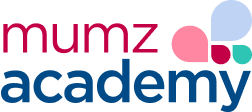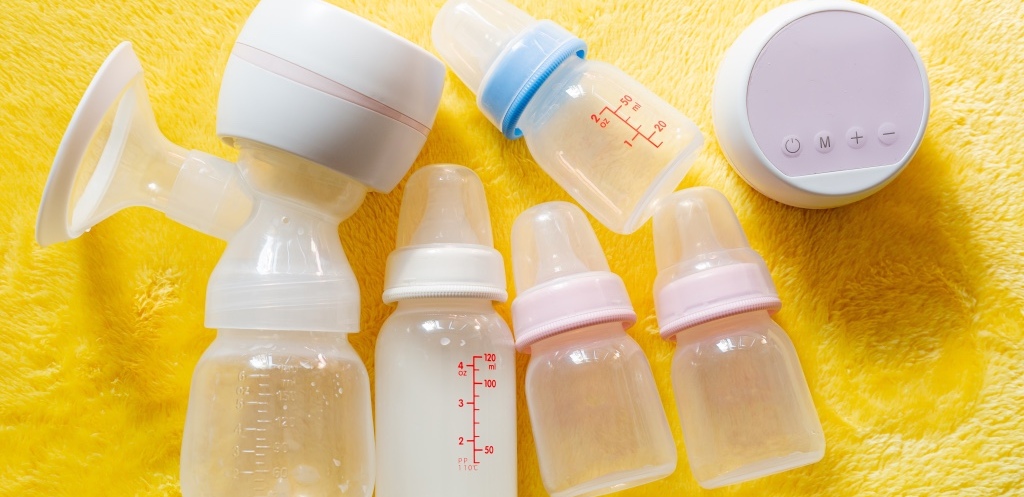Hey Mumz! The journey of parenthood is filled with countless joys, and watching your little one grow is truly magical. A common question that comes with this journey is all about feeding: “Is my baby eating enough?” or “How often should I feed them?” These are perfectly normal questions, and understanding a reliable baby feeding chart can bring so much peace of mind. At Mumzworld, your trusted online baby shop in the Middle East, we’re here to offer you a comprehensive baby feeding chart that guides you through every stage, ensuring your baby gets the nourishment they need.
What is a normal feeding schedule for a baby?
A “normal” feeding schedule for a baby isn’t a one-size-fits-all strict timetable; it’s highly dependent on your baby’s age, weight, and individual needs, primarily driven by their hunger and fullness cues. Generally, newborns feed frequently, and the intervals gradually lengthen as they grow. This baby feeding chart will provide you with age-specific guidelines to help you understand what’s typical for your little one.
How much should a baby feed by age?
The amount a baby should feed by age varies significantly. Newborns typically consume smaller amounts but more often, while older babies eat larger volumes less frequently and, later, incorporate solid foods. Our detailed baby feeding chart below will offer clear estimations for different age groups, from milliliters of milk to introducing solids.
Understanding Your Baby Feeding Chart: Amounts and Times by Age
Understanding your baby feeding chart is key to responsive feeding. Always remember to watch for your baby’s hunger cues (like rooting, lip smacking, bringing hands to mouth) and signs baby is full (turning head away, closing mouth, relaxing hands).
From Birth to 6 Months: The Liquid Gold Phase
In these early months, breast milk or formula is your baby’s sole source of nutrition.
Newborn Feeding Chart (Formula):
- Newborn Feeding Chart ML: For newborns (first week), expect about 30-60 ml (1-2 oz) per feeding.
- Baby Feeding Chart Week by Week: As they grow, feeding amounts gradually increase. By 1 month, it’s roughly 60-90 ml (2-3 oz); by 2 months, 90-120 ml (3-4 oz); by 3-4 months, 120-180 ml (4-6 oz); and by 5-6 months, 180-240 ml (6-8 oz).
- Formula Milk for Baby 0-6 Months Quantity: A general guideline for formula is about 75 ml (2.5 oz) per kilogram (2.2 lbs) of body weight per day, divided by the number of feedings. This helps you understand the baby milk intake chart for formula-fed babies.
- Baby Feeding Schedule by Age / Newborn Feeding Chart / Infant Feeding Schedule by Age: Newborns typically feed every 2-4 hours. As they grow, intervals might extend slightly.
- Baby Feeding Frequency: Expect 8-12 feedings in 24 hours for newborns.
- To prepare and serve formula safely, ensure you have sterile feeding bottles and a reliable bottle sterilizer.
Baby Feeding Chart Breast Milk (Breastfeeding):
- How much breastmilk should a newborn eat chart: Breastfed babies typically feed “on demand,” meaning whenever they show hunger cues. This can be every 1.5-3 hours in the early weeks, or 8-12 times in 24 hours. There’s no specific milliliter amount on a baby feeding chart breast milk as the baby regulates intake. Focus on wet/dirty diapers and weight gain.
- Breastfeeding Chart: Track feedings for the first few weeks to ensure adequate intake.
- For pumping moms, a breast pump and milk storage bags are essential for flexibility.
General Considerations:
- Baby Feeding Chart by Weight: Weight gain is a key indicator of adequate feeding. Your pediatrician will track your baby’s progress using a baby weight gain chart.
- How Much Baby Eats per Day: The total daily intake of milk (breast milk or formula) will generally range from 700 ml to 1200 ml (24-40 oz) for babies up to 6 months.
From 6 Months to 1 Year: The Exciting World of Solids
Around 6 months, your baby starts an exciting new adventure with solids. This is where your baby feeding chart begins to include complementary foods.
6-Month Baby Food Chart:
- Introducing Solids Schedule / Baby Food Introduction Timeline: Start with single-grain cereals or pureed vegetables/fruits. Offer 1-2 teaspoons once a day, gradually increasing quantity and frequency.
- Baby’s First Foods Chart: Focus on iron-fortified cereals, pureed vegetables (like sweet potato, carrot), and pureed fruits (like banana, apple).
- Pureed Baby Food Chart: Start with the perfect food processor for very smooth purees. As baby tolerates, move to thicker purees, then mashed foods.
- Finger Foods for Babies Chart: Around 8-9 months, introduce soft, easily graspable pieces (e.g., well-cooked pasta, soft fruit pieces).
- Baby Feeding Schedule by Month: By 9-12 months, babies typically have 2-3 solid meals per day, with milk feedings still supplementing.
- You’ll need toddler-friendly spoons, plates, and bowls for this stage.
Beyond the First Year: 1-Year Old Feeding Guide
Once your little one celebrates their first birthday, their baby feeding chart shifts significantly.
1-Year Old Feeding Guide:
Your toddler can now eat most of the foods the family eats, provided they are cut into small, safe pieces.
- Milk intake reduces to around 400-600 ml (16-20 oz) of milk (formula, breast milk, or whole cow’s milk if suitable) per day.
- Focus on three balanced meals and 1-2 healthy snacks per day.
- Encourage self-feeding and variety.
Tips for Feeding Success and Your Baby’s Health
Every baby feeding chart is a guide, not a strict rulebook. The most important baby feeding guide for parents is to listen to your baby.
- Responsive Feeding: Always feed when your baby shows hunger cues and stop when they show fullness cues.
- Patience is Key: It can take multiple tries for a baby to accept new foods. Don’t force them.
- Variety is Good: Introduce a wide range of healthy foods to encourage a broad palate.
- Stay Hydrated: Offer sips of water with solids from a sippy cup as they get older.
- Monitor Growth: Regularly consult your pediatrician and review your baby weight gain chart to ensure healthy development. This is crucial for their pediatric feeding recommendations.
- Printable Baby Feeding Chart: For convenience, many parents find a printable baby feeding chart helpful for tracking feedings and monitoring progress.
Common Questions About Baby Feeding
1. What is a normal feeding schedule for a baby?
A normal baby feeding schedule by age varies. Newborns typically feed every 2-3 hours (8-12 times/day). By 4-6 months, intervals might extend to 3-4 hours. When solids begin, milk feeds decrease slightly, and 2-3 solid meals are added daily. After one year, milk is a complement to three main meals.
2. When can babies go 4 hours between feedings?
Babies can typically start to go 3-4 hours between feedings around 3-4 months of age, as their stomach capacity increases and they become more efficient feeders. This transition will be evident in their baby feeding schedule by month.
3. How much should a baby feed by age?
- 0-6 months: Primarily milk. Newborns consume 30-60 ml (1-2 oz) per feed. By 6 months, they may take 180-240 ml (6-8 oz) per feed, totaling 700-1200 ml (24-40 oz) daily.
- 6-12 months: Continue milk (breast milk or formula) as a main source, with 1-3 servings of solids per day.
- After 1 year: Solid food becomes primary, with 3 meals and 2 snacks, complemented by 400-600 ml (16-20 oz) of milk daily.
4. How to calculate baby feedings?
To calculate formula feeding amounts by age, a general rule is to offer about 75 ml (2.5 oz) of formula per kilogram (2.2 lbs) of your baby’s weight per day. Divide this total by the number of feedings in 24 hours. For example, a 6 kg (13.2 lbs) baby would need about 450 ml (15 oz) daily, divided by 6-8 feedings. Always consult your pediatrician for precise pediatric feeding recommendations.
Conclusion: Baby Feeding Chart – Your Guide to a Successful Feeding Journey!
Understanding your baby feeding chart is a powerful tool that brings confidence to your parenting journey. Remember, these charts are general guidelines, and your baby’s cues are always the most accurate indication of their needs. Responsive feeding is key to nurturing a happy, healthy eater.
At Mumzworld UAE, we’re committed to providing you with all the essentials to make your baby’s feeding journey smooth and enjoyable. From safe feeding bottles and efficient breast pumps to practical milk storage bags, and later, high chairs and baby food makers for solids, we have everything you need.
Explore our comprehensive collection of feeding essentials today at Mumzworld, and confidently begin your baby’s delicious journey!






